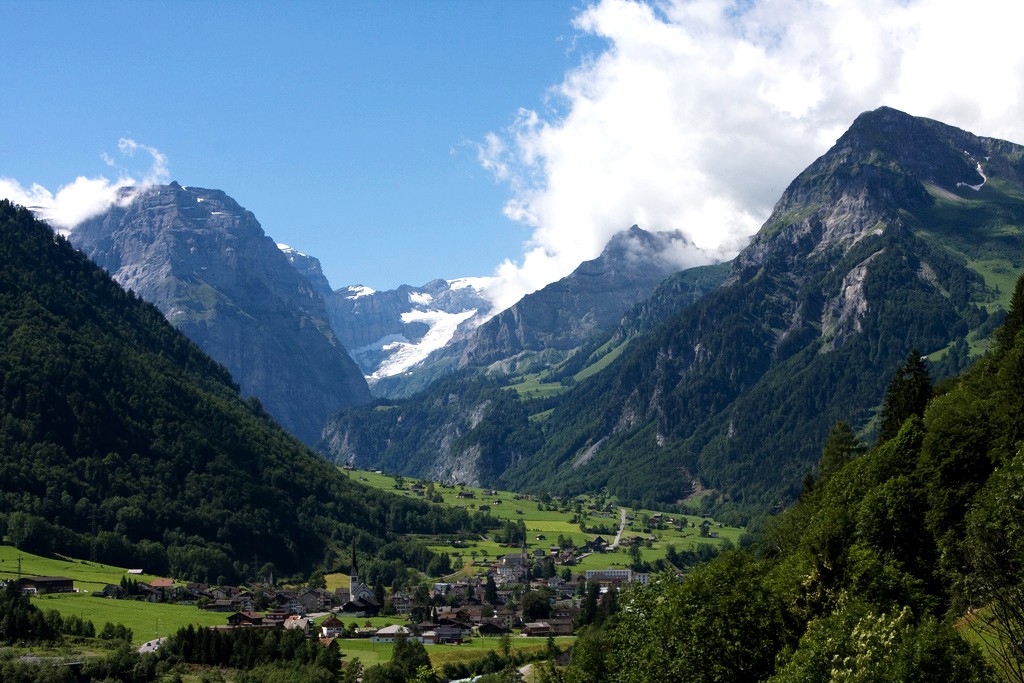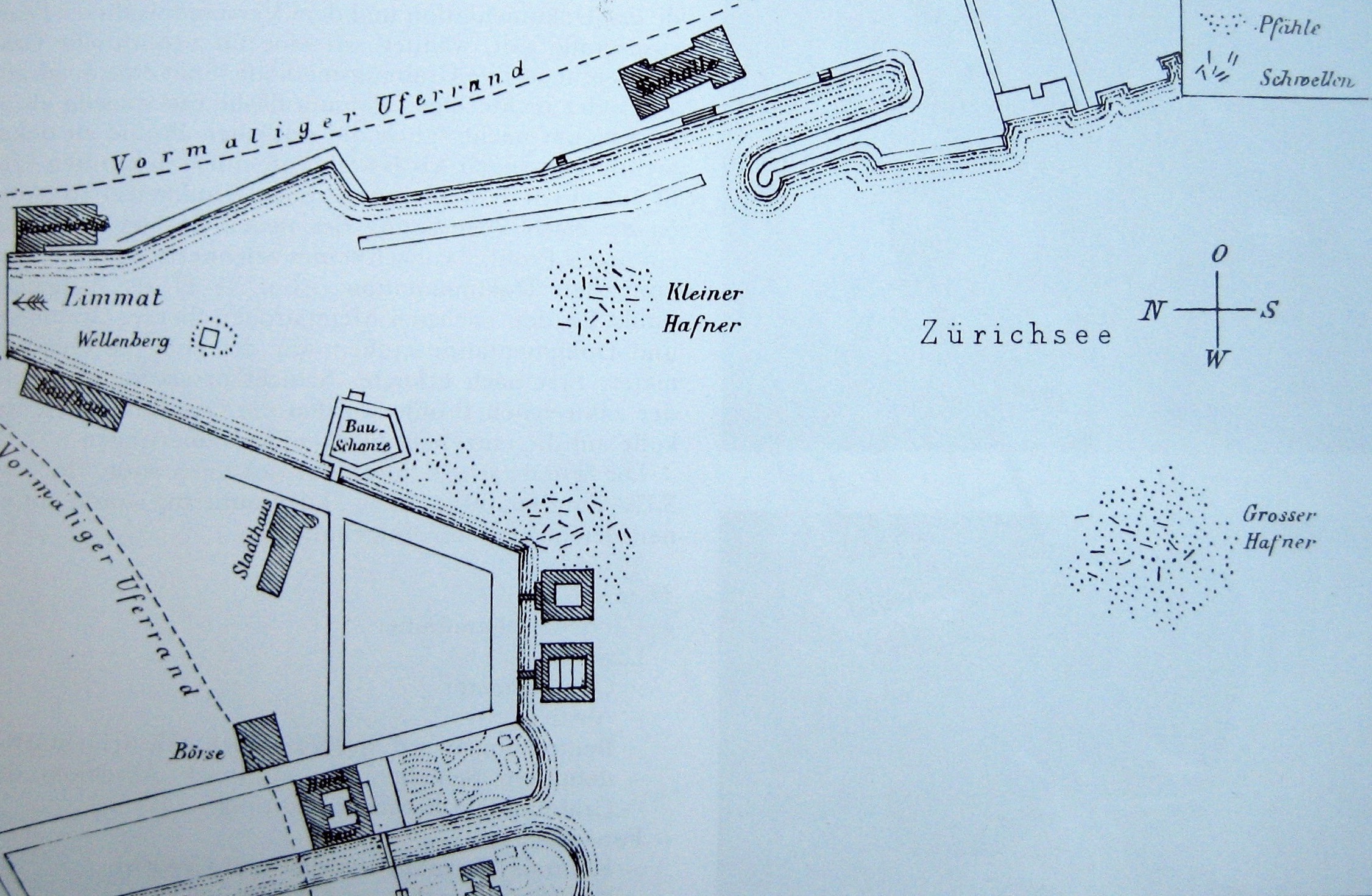|
Lindenhof Hill
The Lindenhof (lit.: ''courtyard of the lime'') is a moraine hill and a public square in the historic center of Zürich, Switzerland. It is the site of the Roman and Carolingian era Kaiserpfalz around which the city has historically grown. The hilltop area—including its prehistoric, Roman, and medieval remains—is listed as a Swiss heritage site of national significance. Topography Lindenhof (its northern part is called ''Sihlbühl'') dominates the Lindenhof quarter in district 1 (Altstadt), the historical center of Zürich's Altstadt. To the North, it ends at ''Uraniastrasse'' (City police station) and to the South, it ends near St. Peter church. In the West, the hill is limited by the Bahnhofstrasse, and in the east, it ends at the Limmat and the Schipfe quarter. Lindenhof sits atop the remains of a glacier. The hill and its public square are part of the Linth Glacier's moraines in the area of Zürich. The now largely flattened Lindenhof (428 m ü. M) rises about ... [...More Info...] [...Related Items...] OR: [Wikipedia] [Google] [Baidu] |
Käferberg - Lindenhof - Schipfe - Limmat - Sicht Vom Grossmünster Karlsturm IMG 6425
Käferberg (el. ) and Waidberg (el. ) are the summits of a wooded mountain respectively chain of hills overlooking the inner city of Zürich, Zürichsee, Albis chain and Uetliberg, as well as the Limmat Valley and the Zürcher Unterland in Switzerland. Geography Käferberg (Swiss German: ''Chäferberg'' meaning ''mountain of beetles'') and Waidberg (mountain of meadows) are the peaks of a longish mountain in the north of the Limmat Valley. It is located in the Zürich districts of Höngg, Wipkingen and Affoltern, between ''Bucheggplatz'' and ETH-Hönggerberg, known as ''Science City'', and the western ''Hönggerberg'' heading on the northern border of the Limmat valley to Würenlos. In the east, Käferberg is bordered by a small mountain pass between Bucheggplatz () and ''Milchbuck'' () at Zürichberg, leading from the city of Zürich to the Glatt valley. In the north, the region is bordered by the Glatt, and Furt valleys. Its highest point (''Waidberg'') is about a ... [...More Info...] [...Related Items...] OR: [Wikipedia] [Google] [Baidu] |
Linth
The Linth (pronounced "lint") is a Swiss river that rises near the village of Linthal in the mountains of the canton of Glarus, and eventually flows into the Obersee section of Lake Zurich. It is about in length. The water power of the Linth was a main factor in the creation of the textile industry of the canton Glarus, and is today used to drive the Linth–Limmern power stations in its upper reaches. The river and its upper valley forms the boundary between the mountain ranges of the Glarus Alps, to its east and south, and the Schwyzer Alps, to its west. Course of the river The river rises to the south-west of the village of Linthal, at the foot the Tödi mountain (elevation ). It collects the water from several glaciers, including the Clariden Glacier and the Biferten Glacier, as well as various tributary streams, including the ''Oberstafelbach'', the ''Bifertenbach'', the ''Sandbach'', the ''Walenbach'' and the ''Limmerenbach''. The last of these is dammed to create t ... [...More Info...] [...Related Items...] OR: [Wikipedia] [Google] [Baidu] |
Münsterhof
Münsterhof (literally: Fraumünster abbey courtyard) is a town square situated in the Lindenhof quarter in the historical center of Zürich, Switzerland. Münsterhof is the largest town square within the ''Altstadt'' (old town) of Zürich, and is surrounded by medieval buildings. The area forms part of the southern extension of the Quaianlagen promenades of Zürich's lakefront. Geography Münsterhof is located in front of the Fraumünster church, and lies a short distance from the Münsterbrücke bridge which leads eastwards across the river Limmat to the Limmatquai and Grossmünster church beyond. It is surrounded by medieval buildings, among which are several guild houses, including zur Waag, the former Kämbel guild house, and the art museum Zunfthaus zur Meisen. This area forms part of the southern extension of the '' Quaianlagen'' promenades that were built between 1881 and 1887. Münsterhof is the biggest town square within the former medieval town walls of Züric ... [...More Info...] [...Related Items...] OR: [Wikipedia] [Google] [Baidu] |
Bauschänzli
Bauschänzli is an artificial island, town square, and public park in Zürich, Switzerland. Bauschänzli (diminutive of "construction entrenchment") is one of the last remains of the Baroque fortifications of Zürich which began in 1642. The neighboring Schanzengraben (moat) and the Old Botanical Garden are part of these remains. Since 1907, the island has been used as a restaurant, although it is officially a public square and park. Geography Bauschänzli is situated in the historical '' Alpenquai'' district on the artificial island. It is on the western shore of Limmat, off Bürkliplatz at the '' Stadthausquai'' road and opposite Bellevueplatz. A tiny public park can be found here. Points of interests In addition to the Seeuferanlage and its neighboring Uto and General Guisan quays, the Zürich Arboretum and the Zürich Aviary are nearby. The aviary houses the '' Vogelpflegestation'', a unique sanctuary for birds. Other attractions include the historical Lindenho ... [...More Info...] [...Related Items...] OR: [Wikipedia] [Google] [Baidu] |
Grosser Hafner
Grossner Hafner is one of the 111 serial sites of the UNESCO World Heritage Site ''Prehistoric pile dwellings around the Alps'', of which are 56 located in Switzerland. Geography Grosser Hafner was located on the then swamp area between the Limmat and Zürichsee around Sechseläutenplatz on a small lake island in Zürich, and as well as the other Prehistoric pile dwellings around Zürichsee set on piles to protect against occasional flooding by the Linth and Jona. The settlement is located on Lake Zurich in Enge, a locality of the municipality of Zürich. It was neighbored by the settlements Zürich–Enge Alpenquai and Kleiner Hafner on a then island in the effluence of the Limmat, within an area of about in the city of Zürich. Grosser and Kleiner Hafner comprise , and the buffer zone including the lake area comprises in all. History Internationally known is the area since 2009, as in the beginning of the construction of the underground parking facility at Sechseläut ... [...More Info...] [...Related Items...] OR: [Wikipedia] [Google] [Baidu] |
Kleiner Hafner
Kleiner Hafner is one of the 111 serial sites of the UNESCO World Heritage Site ''Prehistoric pile dwellings around the Alps'', of which are 56 located in Switzerland. Geography Kleiner Hafner was located on the then swamp land between the river Limmat and Zürichsee around Sechseläutzenplatz on a small peninsula in Zürich, and as well as the other Prehistoric pile dwellings around Zürichsee set on piles to protect against occasional flooding by the rivers Linth and Jona. The settlement is located on ''Zürichsee'' lakeshore in Enge, a locality of the municipality of Zürich. It was neighbored by the settlements Zürich–Enge Alpenquai and Grosser Hafner on a then island in the effluence of the Limmat, within an area of about in the city of Zürich. Grosser and Kleiner Hafner comprise , and the buffer zone including the lake area comprises in all. History The site is internationally known since 2009, when during the beginning of the construction of the underground pa ... [...More Info...] [...Related Items...] OR: [Wikipedia] [Google] [Baidu] |
Prehistoric Pile Dwellings Around Zürichsee
Prehistoric pile dwellings around Lake Zurich comprises 11 – or 10% of all European pile dwelling sites – of a total of 56 prehistoric pile dwellings around the Alps in Switzerland, that are located around Lake Zurich in the Cantons of Switzerland, cantons of Canton of Schwyz, Schwyz, Canton of St. Gallen, St. Gallen and Canton of Zürich, Zürich. Geography These 11 – including one further on the nearby ''Greifensee (lake), Greifensee'' and Robenhausen on ''Pfäffikersee'' lakeshore – prehistoric Stilt house, pile-dwelling (or stilt house) settlements were built from around 5000 BC to 500 BC and are concentrated within an area of about , on Lake Zurich respectively Obersee (Zürichsee), ''Obersee'' lakeshore in the Cantons of Switzerland, cantons of Canton of Schwyz, Schwyz, Canton of St. Gallen, St. Gallen and Canton of Zürich, Zürich. As part of a series of, in all, 111 European prehistoric pile dwellings around the Alps, they were added to the U ... [...More Info...] [...Related Items...] OR: [Wikipedia] [Google] [Baidu] |
Lake Zurich
__NOTOC__ Lake Zurich ( Swiss German/Alemannic: ''Zürisee''; German: ''Zürichsee''; rm, Lai da Turitg) is a lake in Switzerland, extending southeast of the city of Zürich. Depending on the context, Lake Zurich or ''Zürichsee'' can be used to describe the lake as a whole, or just that part of the lake downstream of the Seedamm at Rapperswil, whilst the part upstream of Rapperswil may be called the ''Obersee'' or Upper Lake. Geography Lake Zurich is formed by the Linth river, which rises in the glaciers of the Glarus Alps and was diverted by the Escher canal (completed in 1811) into Lake Walen from where its waters are carried to the east end of Lake Zurich by means of the Linth canal (completed in 1816). The waters of the Lake of Zurich flow out of the lake at its north-west end ( Quaibrücke), passing through the city of Zürich; however, the outflow is then called the Limmat. The culminating point of the lake's drainage basin is the Tödi at 3,614 metres above sea level. ... [...More Info...] [...Related Items...] OR: [Wikipedia] [Google] [Baidu] |






